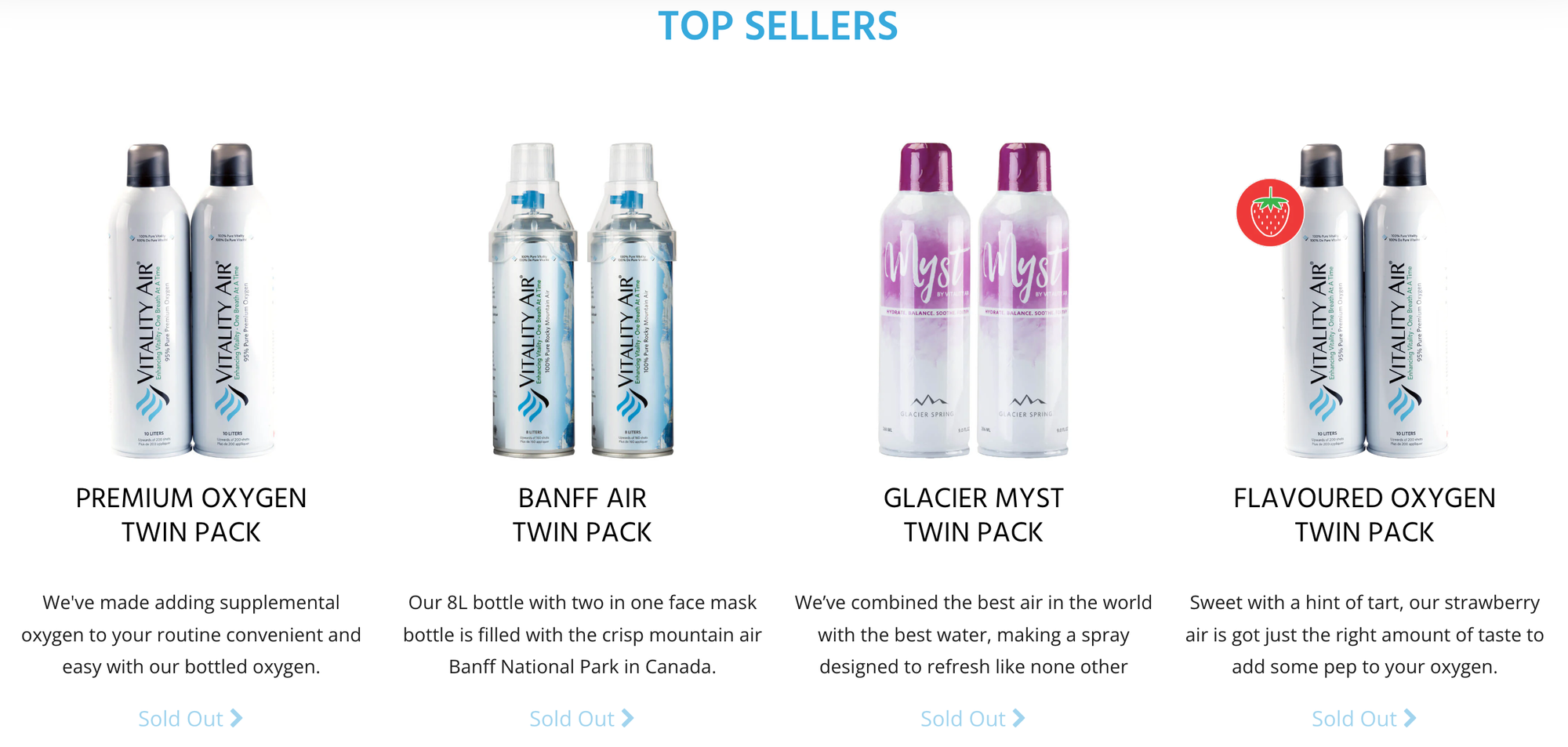Death Branding and Other Cons
"It is all marketing and brand because the reason people choose things 98 percent of the time is not rational. It’s emotional."
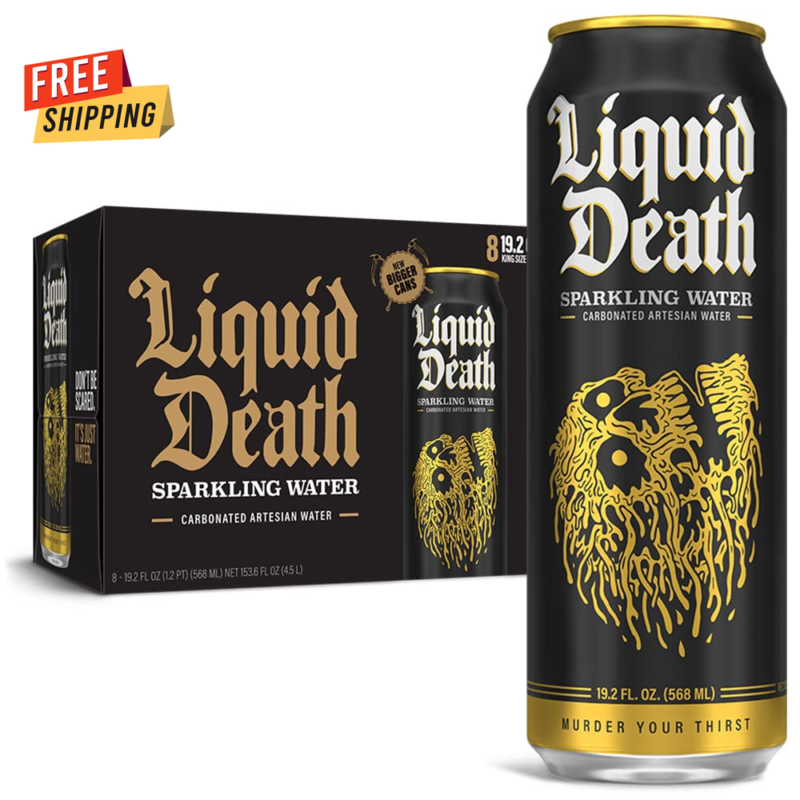
I'm not sure where I first saw it. It was either a gas station convenience store or maybe I ran into a Whole Foods to drop something off at their Amazon kiosk. On an an end-cap: a stack of tall-boy-sized cans with a large, "Liquid Death" brand name (motto: “Murder Your Thirst") in gothic lettering on top of a creepy worm-like skull caught my attention. Liquid Death is one of the more recent packaged water brands. Because if there's one thing we need, is another ridiculous water "concept."
Do you remember when you first saw a bottle of "premium" water? I think "Perrier" made its way over from France when I was in college, maybe before. Absurd! we thought. Packaged in a distinct, tear-drop-shaped green bottle, it instantly became the status sip at the bar when you weren't interested in a cocktail. It is a spring-fed sparkling mineral water as were most of in the first wave of retail packaged waters. Perrier ("Earth’s First Soft Drink") had been around in France since the mid-1800s. A savvy marketer brought it to the States in the 70s and milked its French pedigree. Diners were looking for trendier, more upscale offerings and had begun to search for healthier lifestyles (most soft drinks were sugary or sweetened with saccharine.) Slick TV ads voiced over by Orson Welles were produced and sales shot through the roof. “More quenching, more refreshing, and a mixer par excellence... Naturally sparkling, from the center of the earth.” The only thing that slowed them down was a product recall in 1990 when traces of benzene were found in a few bottles.
So much for the health benefits of pure, spring-fed bottled water.
Nestlé (who would later buy Perrier) became a big player, and other brands got into the game. Along the way, a researcher noticed that Perrier drinkers would refill their groovy green bottles with tap water... No need for fancy fizzy water, just bottle up some filtered water from the local municipal pipe, give it some mystical meaning, and package it for sale. That's when Evian ("water the way nature intended") became a strong contender.
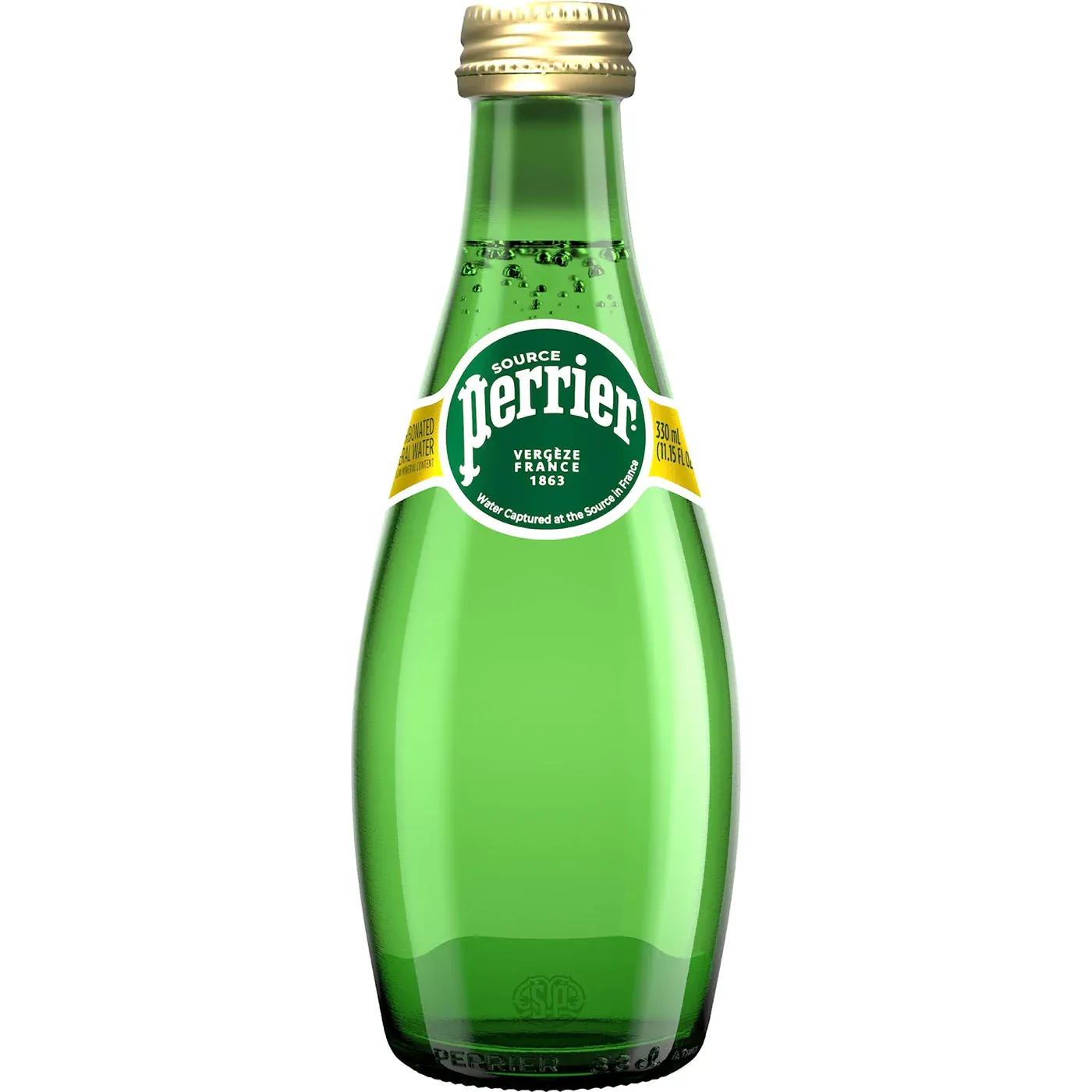
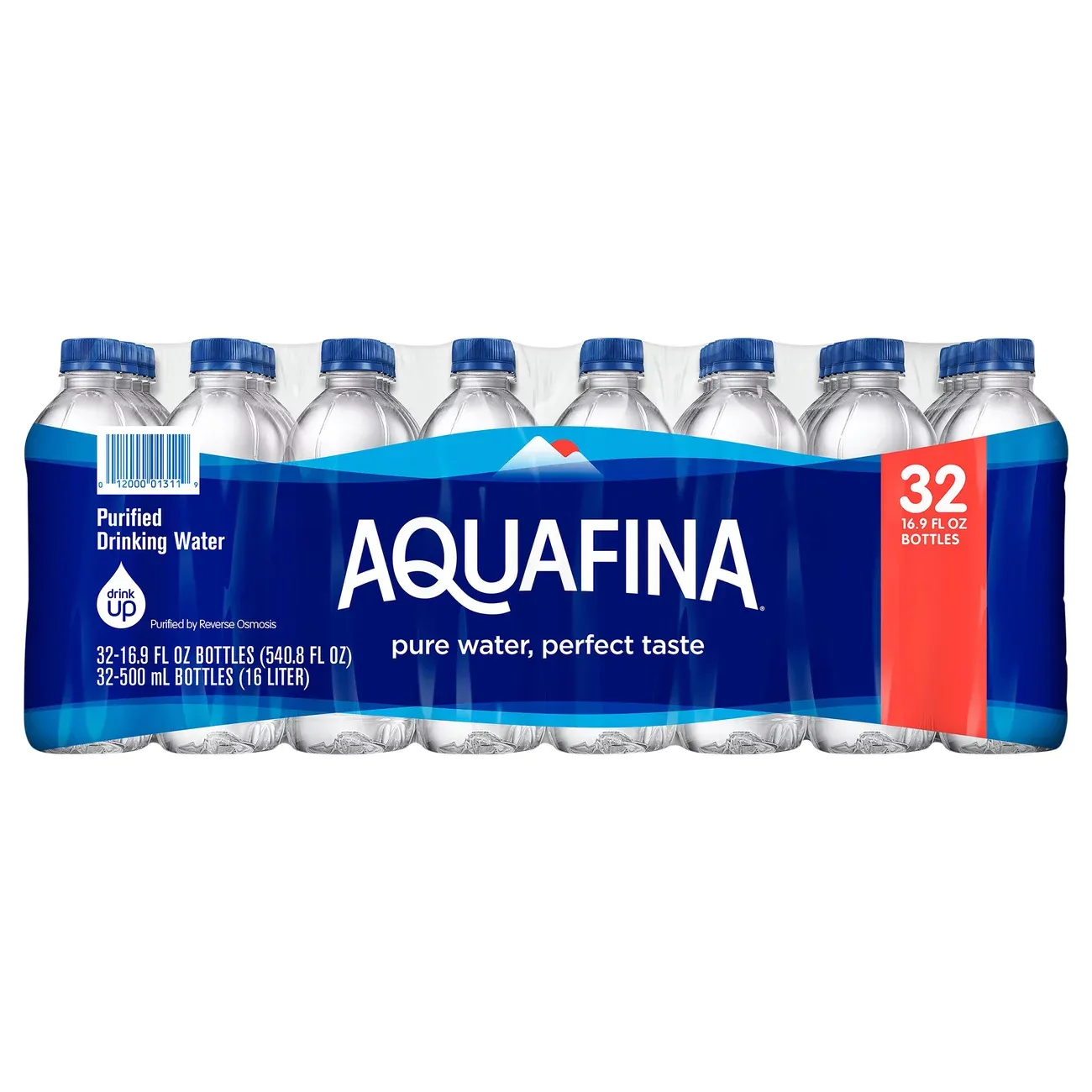
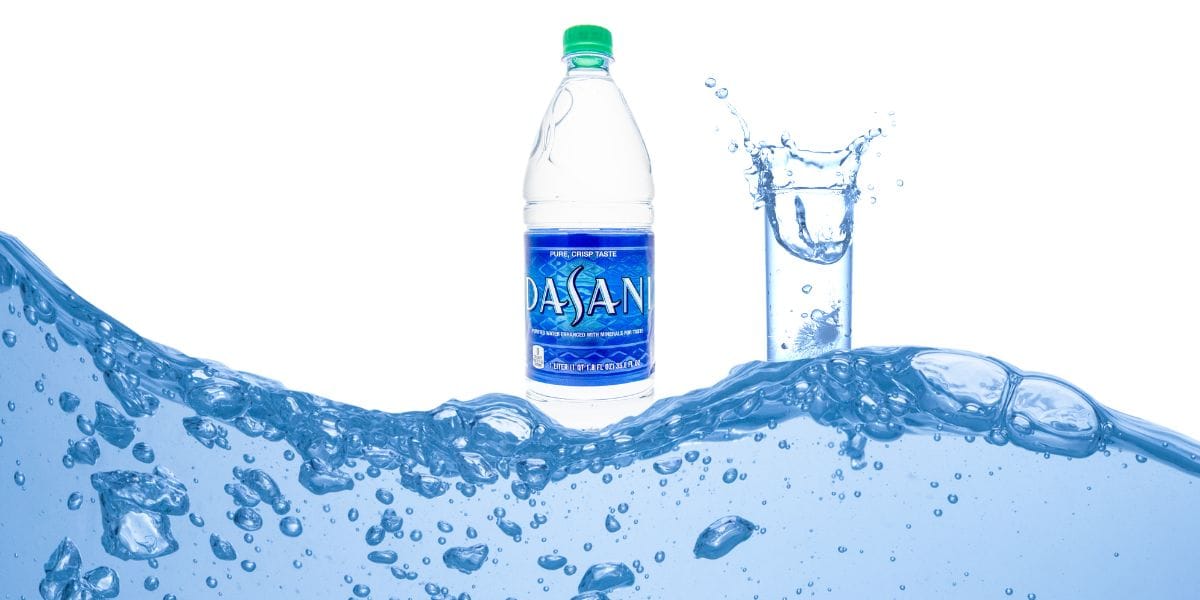
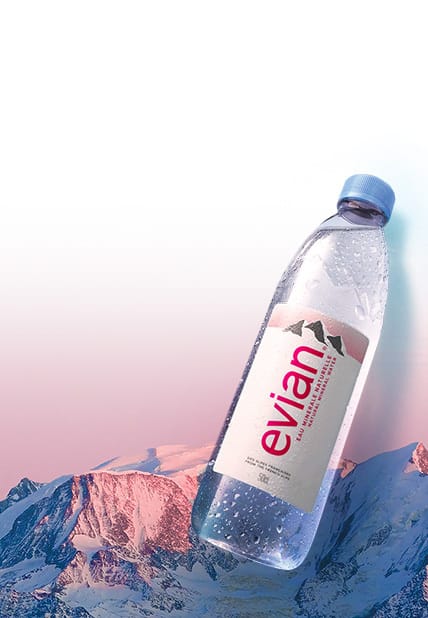
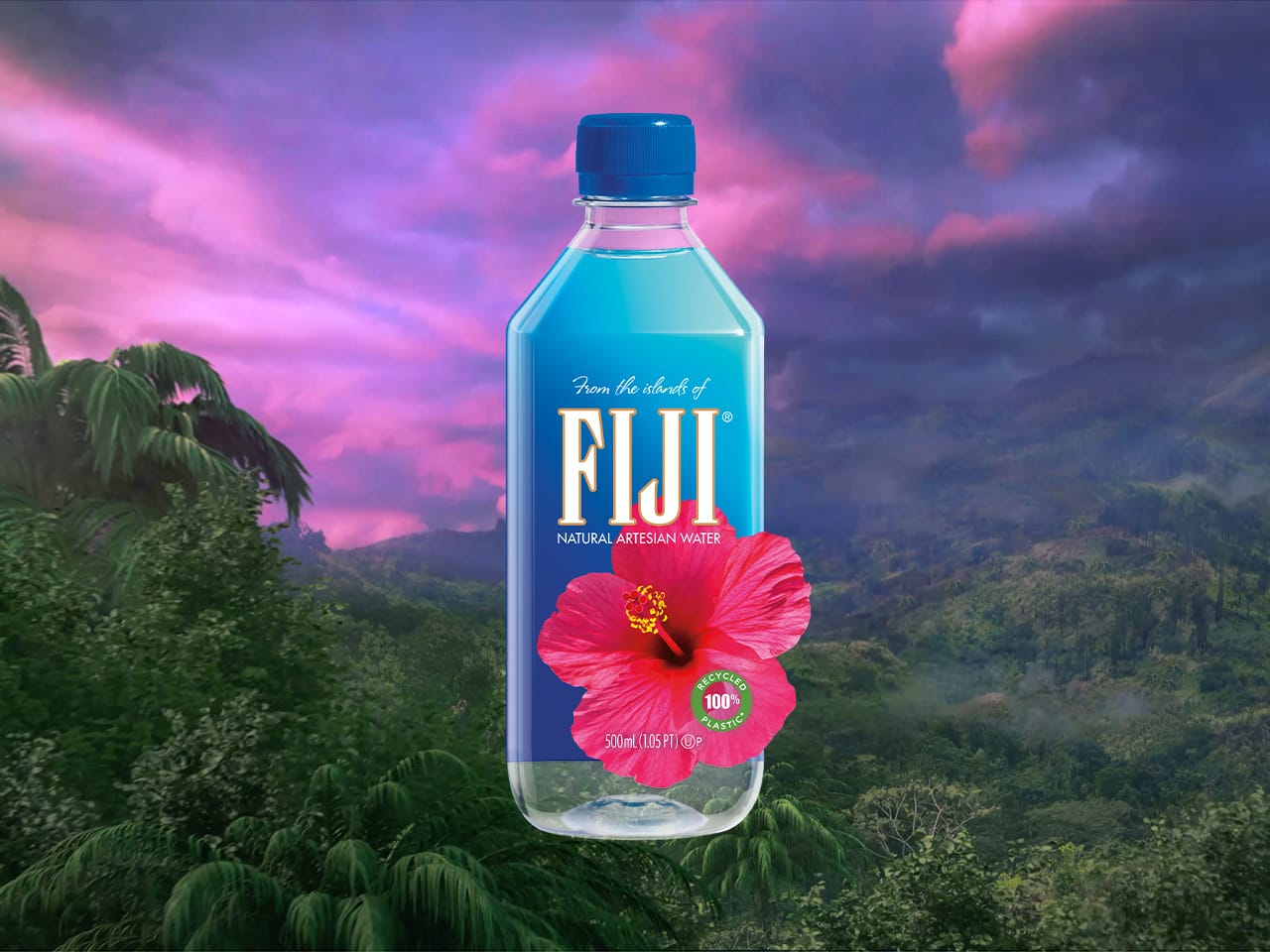
To his credit, Liquid Death co-founder and CEO Mike Cessario wanted to be really different - even weird. Rather than be virtuous, fancy, or athletic... he wanted to inject humor into his product. He produced that funny brand slogan and product names that play with the "death" brand. "Murder Your Thirst." "Severed Lime Flavor." "Green Leafer Tea." The wormy, abstract skull logo has become popular as a tattoo. How cool can you be? And different. Like they all wanna be, somehow.
Today's digital ad world made it easy for him to test the idea of his concept before he even went into production!
In 2017, the brand concept launched with $2,000 worth of Facebook ads — and this is critical — before manufacturing a single can, quickly attracting followers and comments. It was the emperor’s new water.
“Like every truly large valuable brand, it is all marketing and brand because the reason people choose things 98 percent of the time is not rational. It’s emotional,” Cessario says. “People often bring up that the marketing is so important because it’s water, but it is important for every single product that exists.”
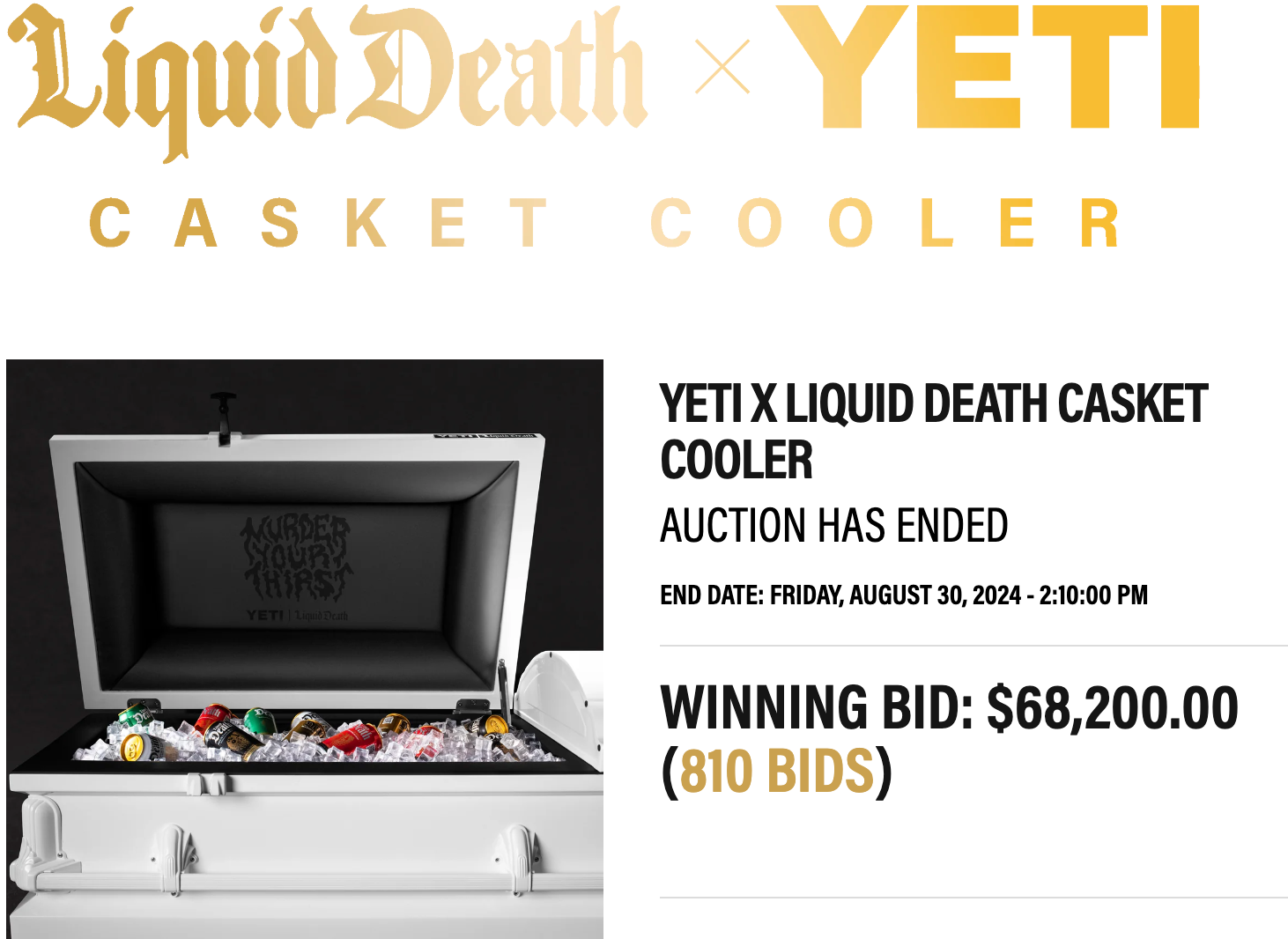
According to last month's water bill, I used around 3,000 gallons of water. The total was around $58. Ignoring that the city also factors in charges for drainage, sewage and other random services, that comes to less than 2 cents a gallon. The retail price for eight 19.2 oz. cans of "Liquid Death" is $12.99. That's approximately $10.83 a gallon. I'm at the limit of my mathematical ability, but the percent difference between .02 and 10.83 a gallon is... (add the 3, multiply by something, carry the 6....) well it's a LOT. Or, let's compare it to gasoline. The pump I pulled up to recently had unleaded at about 3 bucks a gallon, ⅓ the price of "Liquid Death" water.
Marketers have convinced us to buy something we don't want, but can be convinced that we need, at an absurd price point. Every human in the USA from toddlers to centenarians has a cabinet full of sports bottles, insulated mugs, cups, jugs, and thermoses. And all those containers are easily refillable from, as crazy as this sounds, the kitchen faucet. For almost a penny a gallon.
How do they do it? Get us to pay over a 50,000% markup for a glass of H2O? Branding. 'This bottle has the fresh taste of melting glacier ice,' 'that one is sourced from a clean, healthy Rocky Mountain creek,' 'and there's one is from a natural artesian aquifer in the Yaqara Valley on the island of Viti Levu in the Fiji Islands.' (No really. That's where Fiji water comes from.) That's what some of that price markup is all about.
All these products have to be sourced from an adequate water supply. That supply needs to be pumped out, filtered, bottled, packaged, and then shipped (sometimes extraordinary distances) to retailers all over the country. A tremendous wast of energy. It will not surprise you that some of these brands DO come from the same municipal pipe that runs to your faucet. The brand masters just show a snow-capped peak on the label and presto! It's got that mountain taste!
It's all manufactured demand. Brands work to give products prestige, a cachet. Brands create an image that we aspire to be. Some product branding involves a little fear, when needed. "There may be lead, chemicals, or contamination in your city water!" (Uh, and there might be benzene in that fancy fizzy bottled water, too, Perry.) But mostly it's about status, (Perrier, S.Pelligrino,) athleticism (Gatorade Water, Propel,) intelligence, (SmartWater,) health, (Eternal, Essentia, VitaminWater) our desire to be fancy, (Acqua Panna, Icelandic Glacial, Fiji,) and virtue, (Ethos, Give H20.)
In an effort to accentuate its purity, Pepsico ran commercials in 2001 for their "pure" Aquafina water that were reminiscent of the old Seinfeld sit-com themes... they were about nothing.
The spots featured water pouring from a bottle, streams and droplets swishing and dancing through the air. The actress Lisa Kudrow, of Friends renown, did the voiceovers. “Aquafina promises nothing,” she said. “Pure nothing. Go ahead. Take a sip.”
And that nothing will cost you.
It works. Americans now drink, by volume, more bottled water than any other packaged beverage, and that includes soda, coffee, tea, and yes... beer. Branding. "First it was sold, then it was normalized, and then it was commoditized. Now, it's even being enhanced and augmented."
These brands have normalized the consumption of packaged water. Entrepreneurs were first on the scene to upsell it, then we got used to the idea as it became a commodity. Currently, the brands are enhancing, flavoring, and further differentiating their products. Want some kiwi/cherry-flavored vitamin-infused sparkling water? How about a non-carbonated can of caffeinated lavender-cucumber energy water? Then there's gluten-free, locally sourced, artisanal, reverse-osmosis-filtered alkaline coconut water. I think I made that last one up, but go ahead - run with it.
Slick marketing has been around forever, none of this is new. The concept of "branding" and how it is applied to public relations and the advertising of a company is relatively recent and continues to evolve. "Branding is the process of giving a meaning to specific organization, company, products or services by creating and shaping a brand in consumers’ minds," so says the Branding Journal. Generally, "branding" encompasses an entire company or organization... the "brand" makes an effort to define a company's core values, principles, mission, personality, and look.
The Nike swoosh makes you a faster, stronger athlete, ("Just Do It") whichever of their products you wear. Ford trucks are "Ford Tough." Dodge Trucks are "Guts, Glory, Ram." Disneyland is "The Happiest Place on Earth." Notice, that there is no mention of rollercoasters, carousels, or fun food... "Happy Place" is the brand - specifics about the rides, hotels, and restaurants are mentioned further down in the marketing brochure.
Beyond the usual products and services, branding is an important part of, maybe THE most important part of how we see the two political parties.
Democrats have, for many years, defined their brand as the party of the working class, the party for grassroots America. They stand for an active government that provides social safety nets and builds a vibrant infrastructure. You know, a working government. Republicans claim their brand represents traditional conservative values: American patriotism, Christianity, fiscal responsibility, and small government. They are usually seen as representing the wealth class, which has grown very, very wealthy due to their policies of the last few decades.
These brand values have shifted over time. Pre-Civil War, the Democratic Party was the party of the slave-holding South. They believed in weak federal oversight. They were the patriarchal power of white slaveholders. The South was a farming and ranching economy dominated by cotton (and the planter-class.) And yes, it was the party of the KKK. The (mainly) Republican North was a manufacturing economy with access to the deep pockets of financiers and established banks. They wielded much control over the South's economy. The North generally found slavery distasteful, and as the country expanded westward, they wanted new states to be free.
After the fall of the South, (you know, in that "War of Northern Aggression," wink-wink,) Democrats became even more conservative as Reconstruction saw northern Republicans dominate the federal government. The wrecked economy and the resentment over freed slaves only hardened the South's anti-government stance. The South's Jim Crow laws kept black citizens from having access to an equal education, housing, jobs, and voting. Politicians in the North and a few forward-thinking Southerners sympathized with the black community as they struggled for that "All men being equal" thing. The civil rights movement grew stronger and sometimes violent. In 1964, President Lyndon Johnson (a moderate Southern Democrat) signed the Civil Rights Act and the next year the Voting Rights Act. After the Voting Rights Act was passed, the story goes that he told an aide, "I think we've just delivered the South to the Republican Party for the rest of my life, and yours." He was right.
It wasn't long before the Republicans collected those disgruntled southern "Dixiecrats," and the Democratic Party slowly lost rural farmers and ranchers in exchange for black and minority voters.
There is more to this story - the influence of religion and also the big social issues that became a part of each party's ideology, but it is beyond the scope of this article. (Here's a quick primer.)
There has been some re-alignment of party ideologies in the last decade or so. Can you guess why? The Democratic Party had lost so many working-class, blue-collar voters to the R's, that it was becoming hard to see how their "brand" had anything to do with the common man. Republicans have become, simply, the party of Donald Trump.
Republicans had busted the unions and scooped up rural America that felt increasingly "left behind" in an economy that was shifting to urban areas. Dems thought the future lay in a high-tech, information economy. They focussed on the academy to support this new economy. Rural America and increasingly the working class felt threatened by wave after wave of immigrants from multiple countries across the southern border. For years, Dems had shrugged off the religious right, who had become a political force. The so-called "Moral Majority" grew the anger of Republicans over LGBT issues, abortion, and the general secularization of the country.
Trump blew it all up. He used a combination of white nationalism, overt racism, faux religious piety, and warnings of imminent immigrant takeover to foment all the old resentments. He promised to lower taxes and eliminate entire federal agencies (like education, the EPA, etc.) He and the conservative media bullhorn which amplified his every lying utterance, have convinced his cult that he was elected in 2020 and then cheated out of his win. (FoxNews lost ¾ of a billion dollars to Dominion Voting Systems for repeating Trump's known lie that their voting machines were rigged against him.)
Here's the thing: the modern Republican brand is so strong that it has, up to a point, withstood Trump's gutting of their traditional values. The party and the right-wing press keep the brand propaganda going ... waving American flags, and Trump autographed Bibles. And if I hear Lee Greenwood sing "Proud to Be an American" one more time, I may have one of my little episodes. Though busting unions and lowering taxes (primarily on the wealthy) hurts rural and middle America most, his cult believes in the brand that calls them Christian "patriots."
Trump himself has proven to be the most amoral leader this country has ever seen. He's had multiple wives who he cheated on, one with a porn star that was paid for with campaign contributions. His grift is limitless. He lies every time he opens his mouth. He frames immigrants as subhuman and criminal. Virtually anyone who disagrees with him is an enemy: a socialist, a turncoat, a commie, an enemy, or worst of all, a Democrat. He has vowed to avenge these enemies when reelected. Just a real Sunday School teacher, that Trump. Yet his cult still claims he is the Second Coming.
The Democratic Party brand has, by contrast, suffered greatly. For years as they hemorrhaged blue-collar voters, their opponents framed the party as one of out-of-touch "elites." They were accused of being Godless and anti-religion when they advocated for abortion rights, access to birth control, LGBT rights, and even gender equality. They were accused of advocating "open borders." (Trump has conspiratorily accused "millions" of undocumented migrants of illegally voting for Dems.) Dems worked with a few Republicans to put together a bipartisan immigration bill (which Trump demanded that Republicans ignore so that he could continue to assail Democrats as being "weak" on immigration.) Democrats have lost some of their influence with labor union rank and file, though union officers know the legislative scorecard.
On the plus side, there is a realization within the DNC that to succeed, it must retain (or regain) its Brand status. And people are starting to notice. After years of paying lip service to unions, Biden kept his promise to be the most pro-union president in memory. He pushed for key legislation that put billions of dollars into union jobs in clean energy, semiconductors, and other industries. He put labor allies to key leadership positions. He offered unions pension bailouts, apprenticeship funds and policies that have made it easier for workers to organize. Republicans revealed their true nature when they complained that such moves were costly to America.
At the DNC, patriotism became a spoken value. There were flags and patriotic bunting everywhere. Their logo for the convention was flag-flavored.
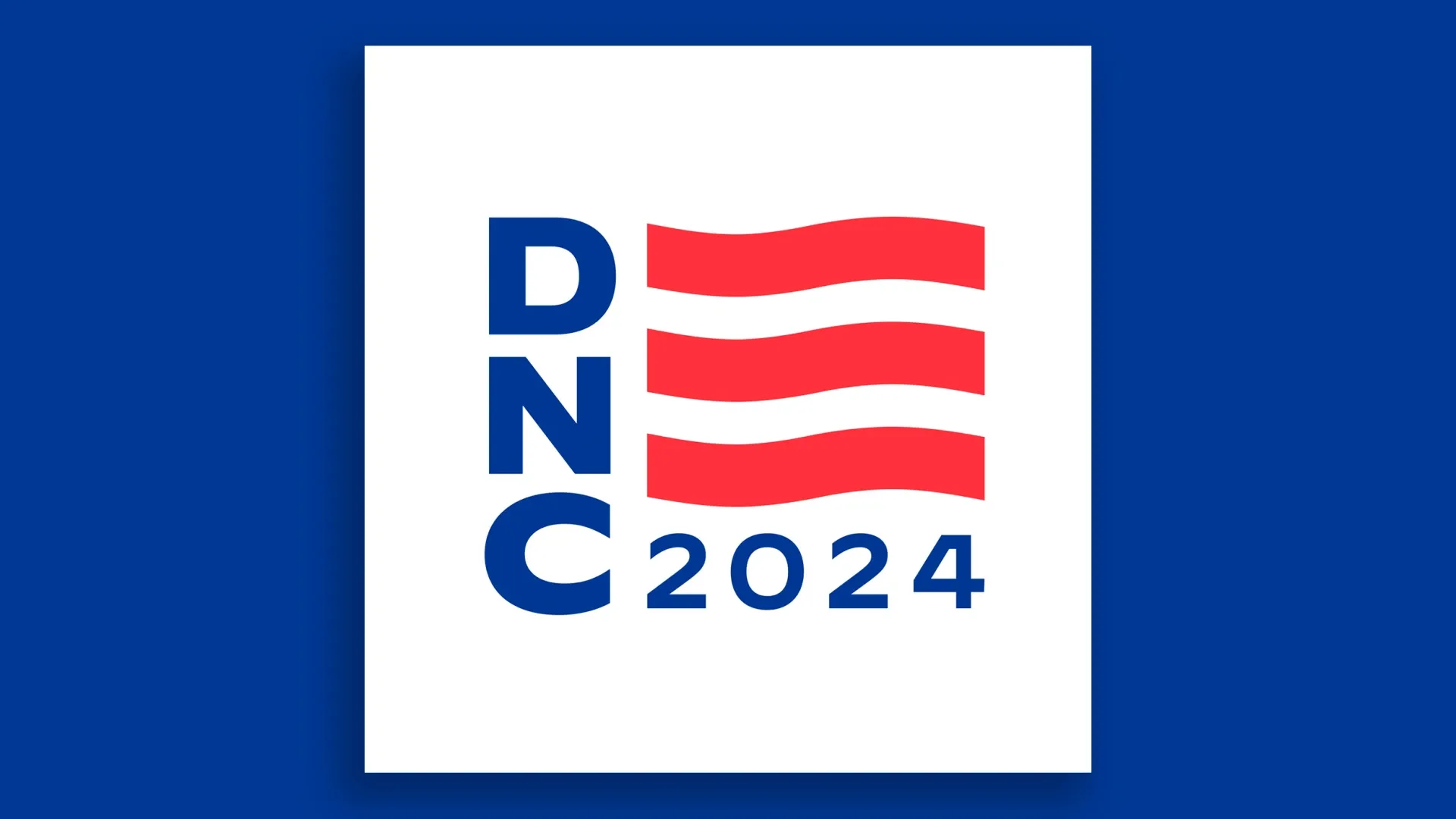
Liberal and moderate churches, after years of being kowtowed into silence by dominant, conservative fundamentalist denominations, have spoken up for LGBT rights, gun regulations, and even abortion rights. Democratic politicians have been reaching out to these progressive denominations, and not just in the black community as per their tradition. Even some evangelicals have begun to abandon Trump (and their denominations) in disgust over his immoral speech and behavior.
Meanwhile, Trump's tearing down of his party's traditional brand is getting noticed, too. Conservative, elite intellectual pundits left the party long ago. Members of the 'never Trump' Lincoln Project for example, as well as David Brooks, David Frum, Bill Kristol and many more. (The Heritage Foundation and other right-wing think tanks have just become more strident. Heritage, for example, produced the Project 2025 plan.) Congresswoman Lynn Cheney, who was famously the vice chairwoman of Jan. 6 panel (and was routed out of Congress for it) has denounced Trump. Only a few days ago, she announced she would vote for Harris. There's no one more a (traditional) right-wing conservative than Lynn Cheney, except maybe her father, former Vice President and old neocon Dick Cheney. And now HE has announced that he will vote for Harris. Whatever advances that the Republicans thought they had made with "suburban women" and independent voters have been burned to the ground by Trump and his misogynistic VP choice, Hillbilly JD Vance. Vance might as well have said that wimins need to be kept home, barefoot and pregnant. His rhetoric has been toxic.
And finally, the aforementioned Project 2025 GOP blueprint for the future and Trump's speeches that suggest that there may never be a need for another election, seem to confirm his totalitarian ambition. This does not reflect a brand of "less government" and personal liberty. There is no bigger or more oppressive government you can have than one with a lifetime autocrat in charge.
Water. Gold tennis shoes. Trump.
Brands can be built on manufactured demand. We buy something we don't want, but get hoodwinked that we need, and pay an absurd price for it.
We've normalized paying $10 a gallon for water. Wearing designer logos on our shirt pockets. And accepting a Republican leader who is an amoral conman, a grifting fraud who is pissing away "low IQ" donors' cash to pay for his hookers, his mango-colored makeup, and the dead badger on his head.
I guess clever brand managers can con us into buying anything. What's next? Canned air???
Oooops. Spoke too soon.
